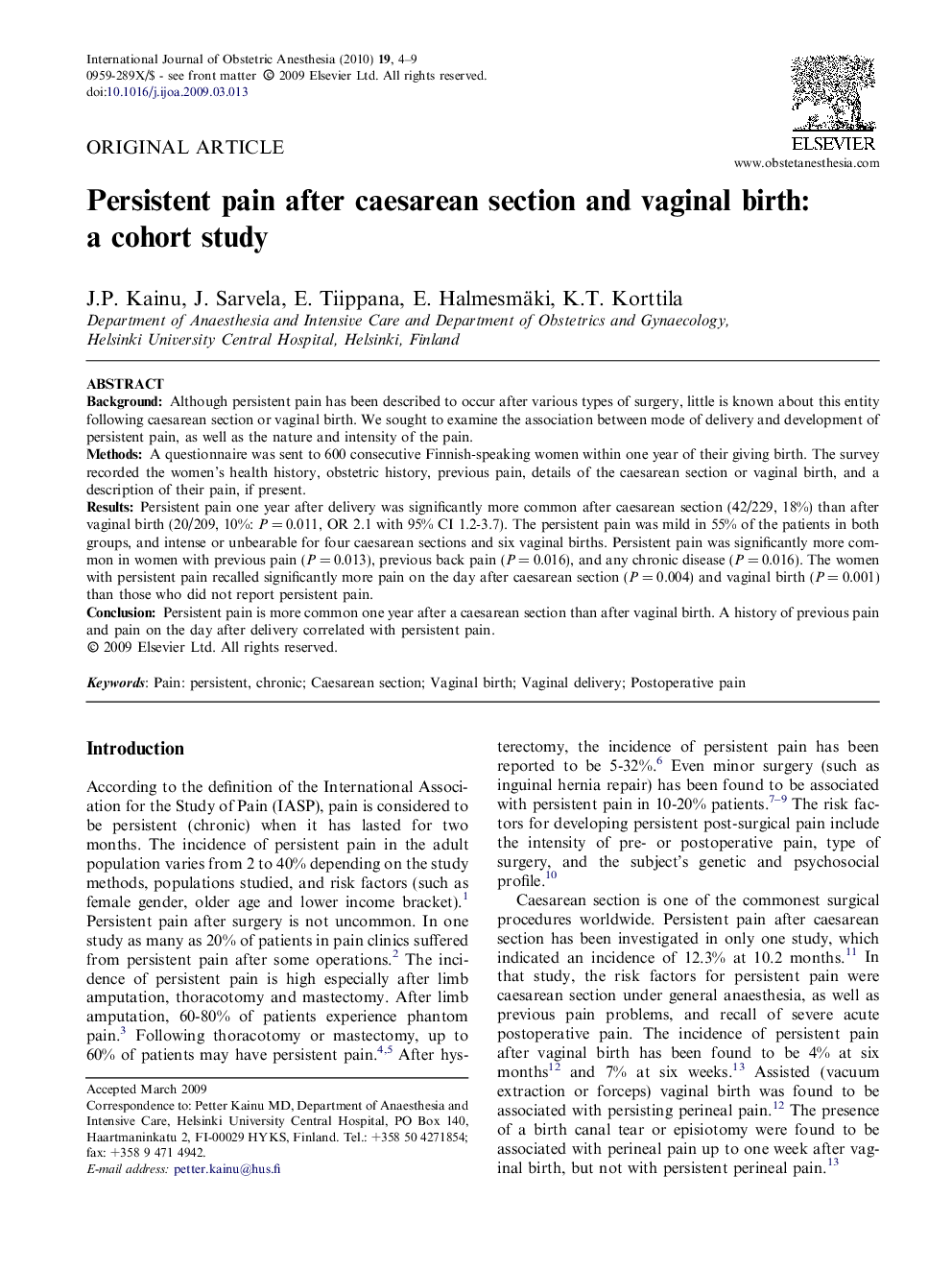| Article ID | Journal | Published Year | Pages | File Type |
|---|---|---|---|---|
| 2758279 | International Journal of Obstetric Anesthesia | 2010 | 6 Pages |
BackgroundAlthough persistent pain has been described to occur after various types of surgery, little is known about this entity following caesarean section or vaginal birth. We sought to examine the association between mode of delivery and development of persistent pain, as well as the nature and intensity of the pain.MethodsA questionnaire was sent to 600 consecutive Finnish-speaking women within one year of their giving birth. The survey recorded the women’s health history, obstetric history, previous pain, details of the caesarean section or vaginal birth, and a description of their pain, if present.ResultsPersistent pain one year after delivery was significantly more common after caesarean section (42/229, 18%) than after vaginal birth (20/209, 10%: P = 0.011, OR 2.1 with 95% CI 1.2-3.7). The persistent pain was mild in 55% of the patients in both groups, and intense or unbearable for four caesarean sections and six vaginal births. Persistent pain was significantly more common in women with previous pain (P = 0.013), previous back pain (P = 0.016), and any chronic disease (P = 0.016). The women with persistent pain recalled significantly more pain on the day after caesarean section (P = 0.004) and vaginal birth (P = 0.001) than those who did not report persistent pain.ConclusionPersistent pain is more common one year after a caesarean section than after vaginal birth. A history of previous pain and pain on the day after delivery correlated with persistent pain.
